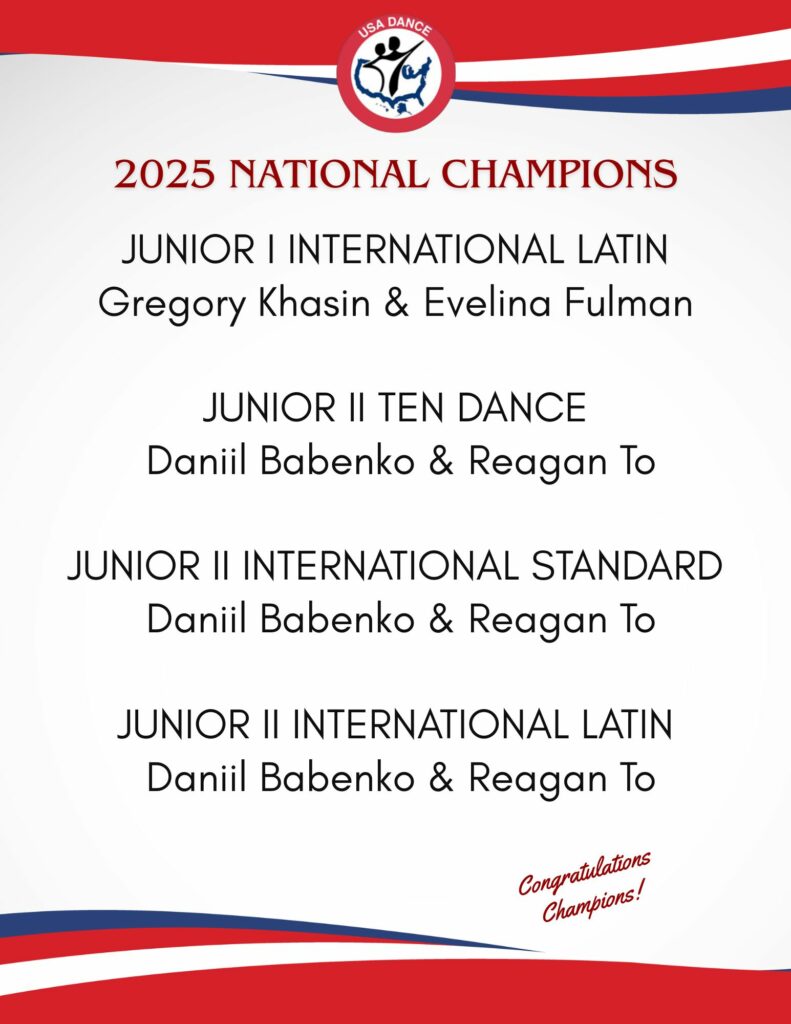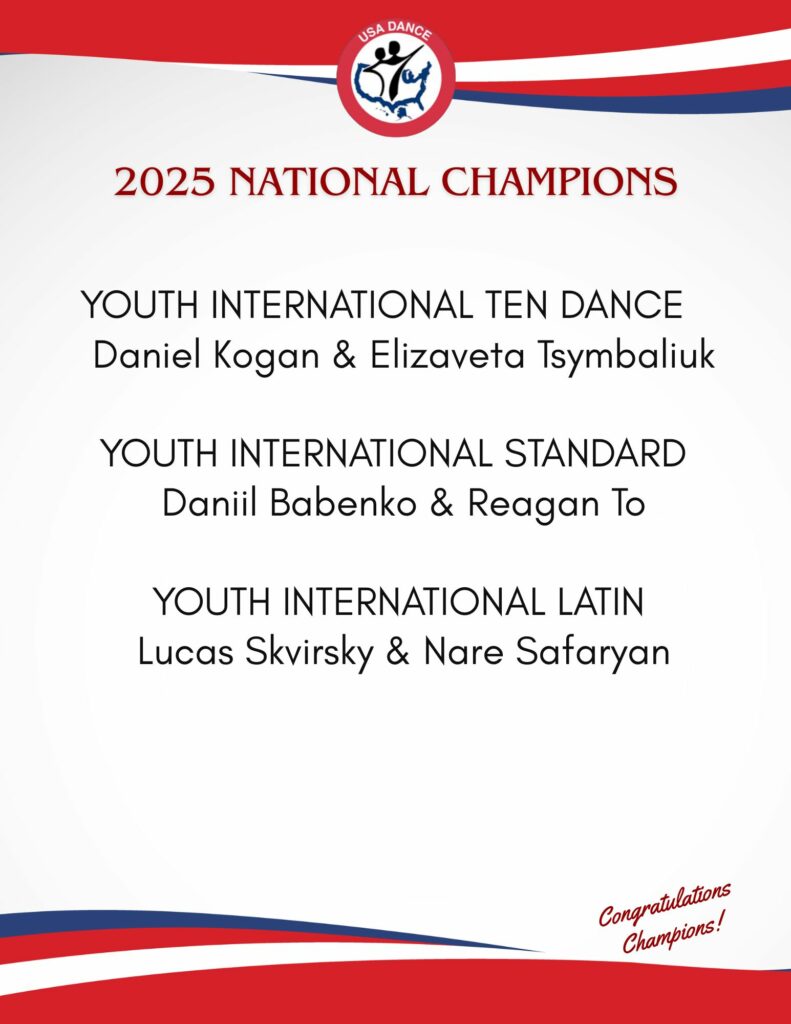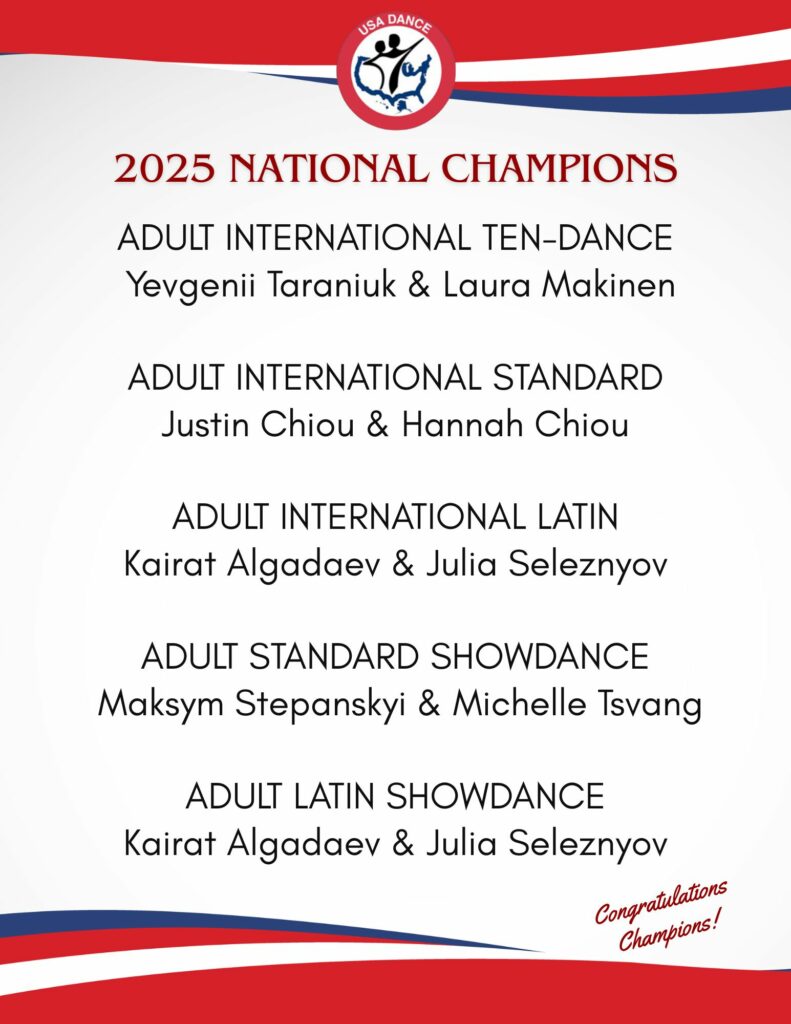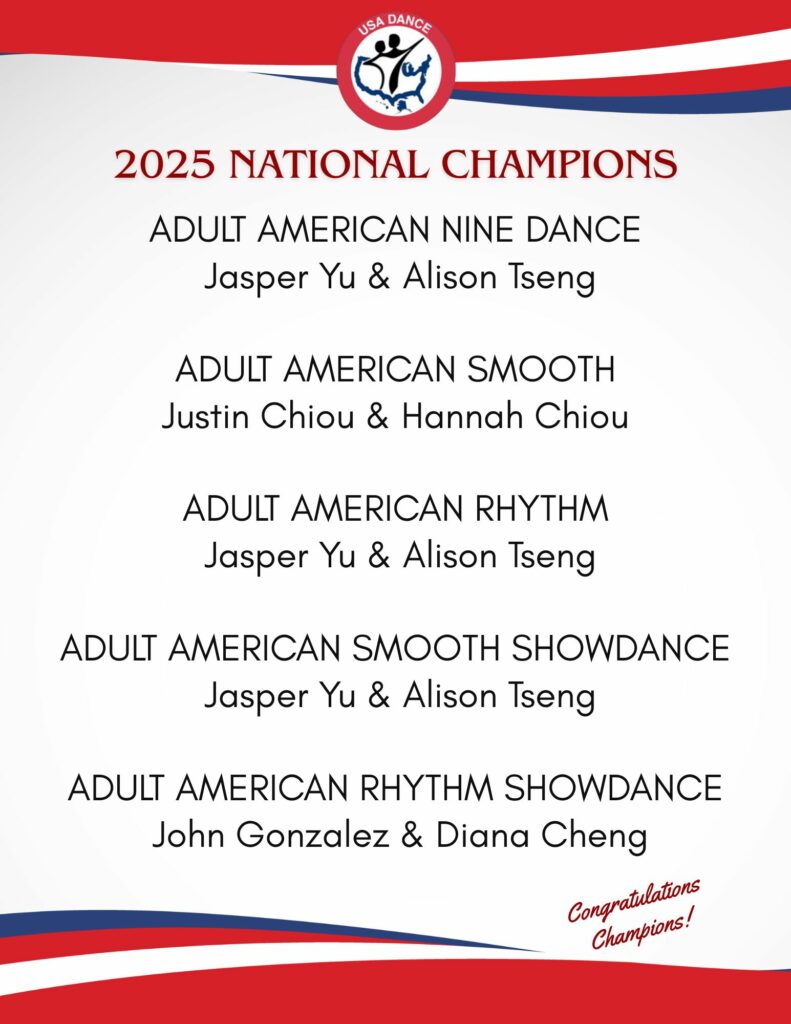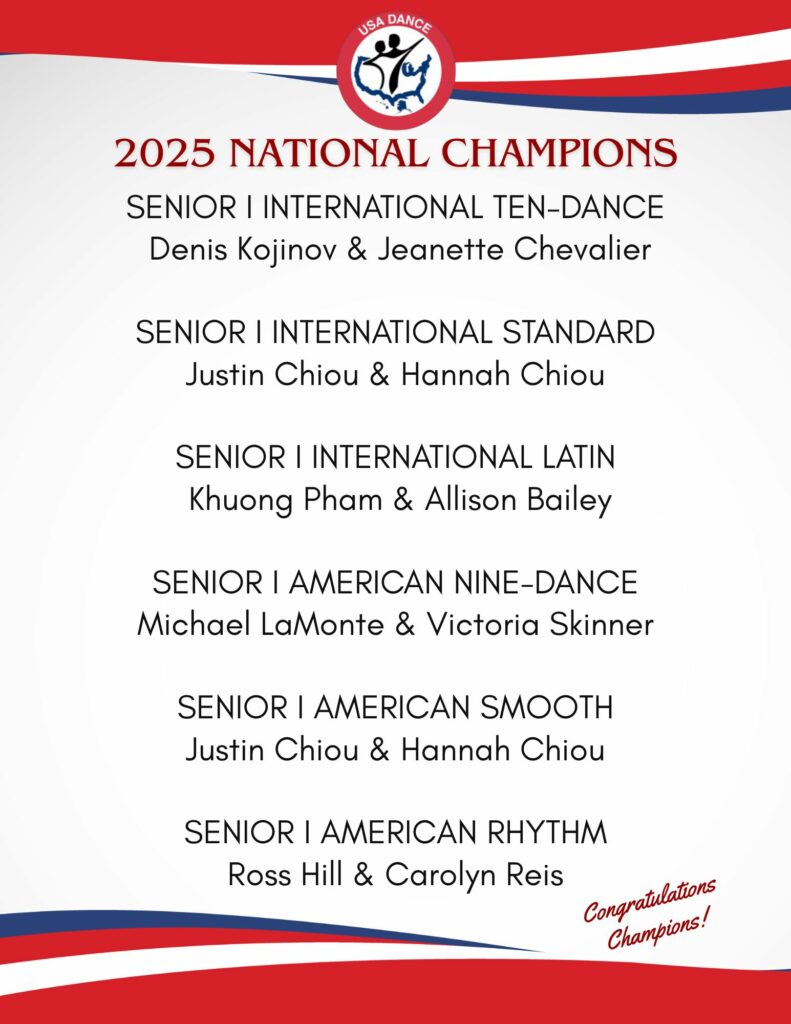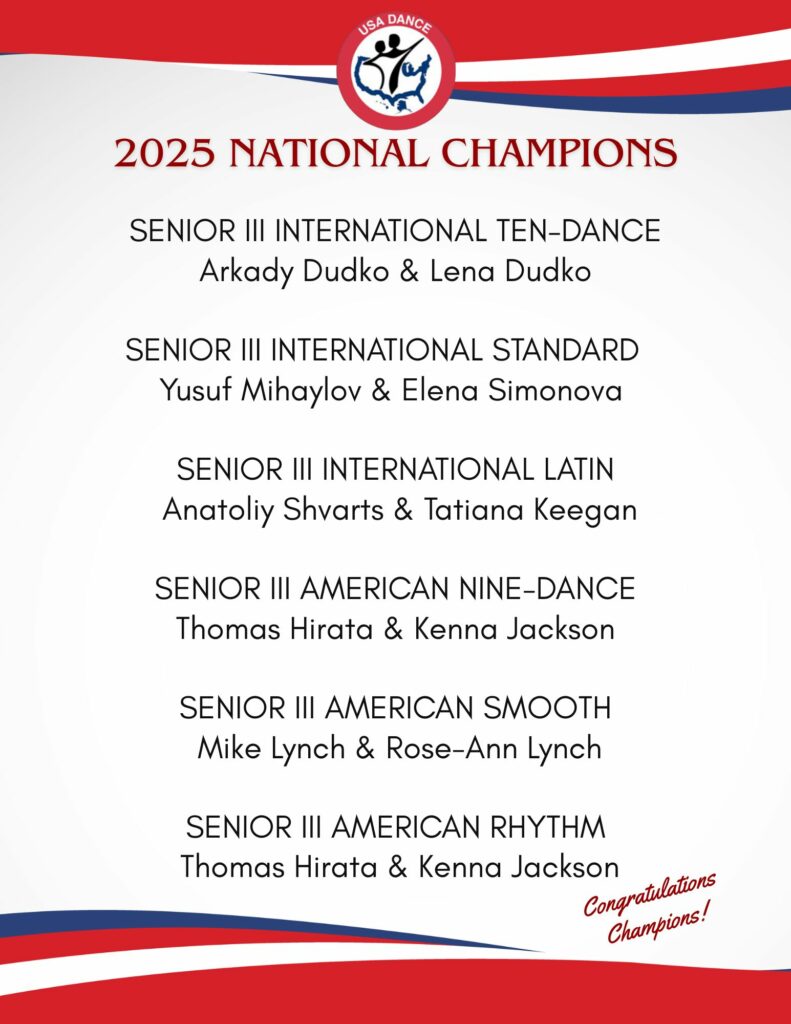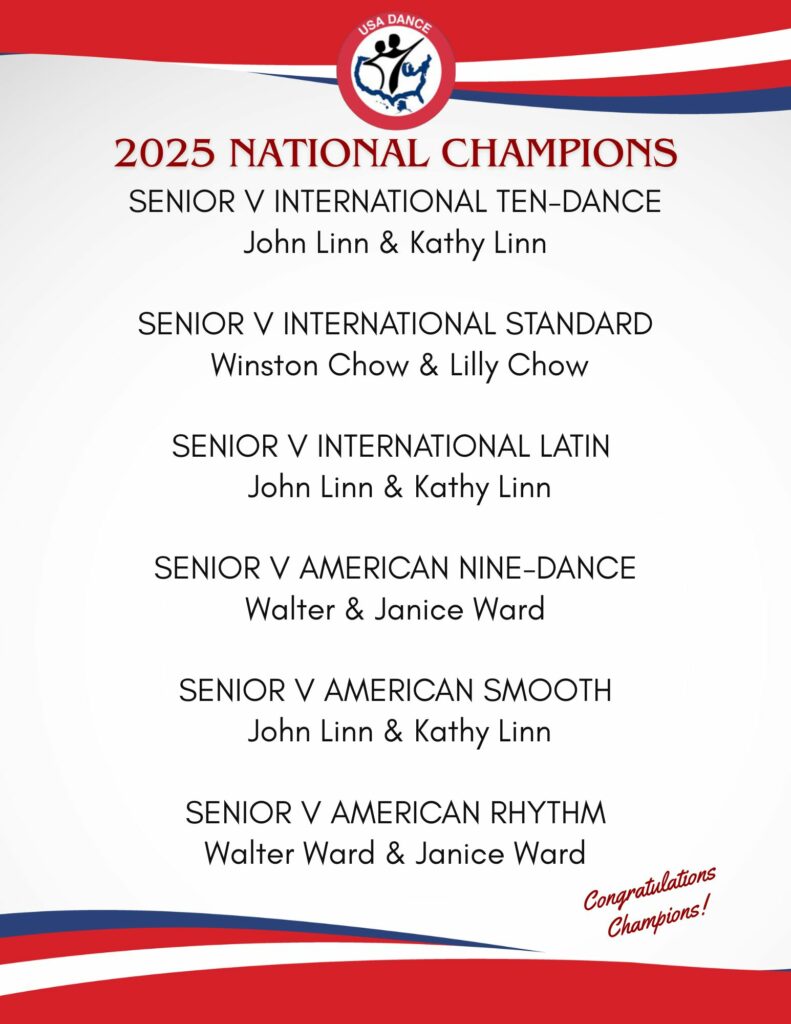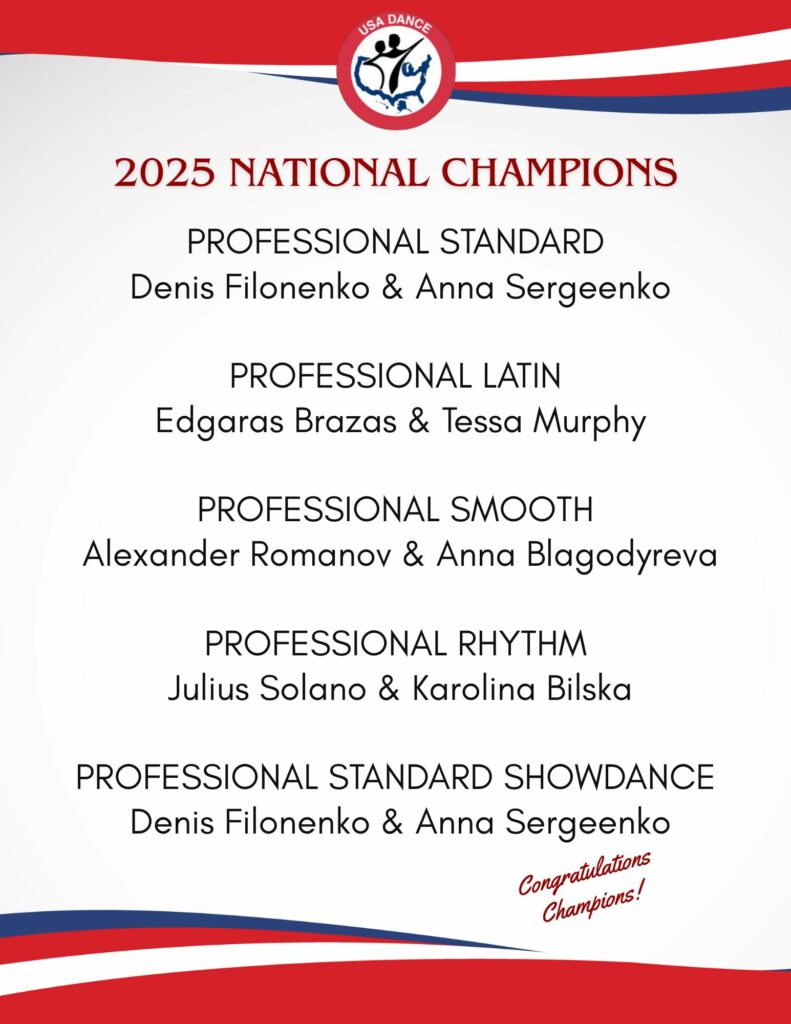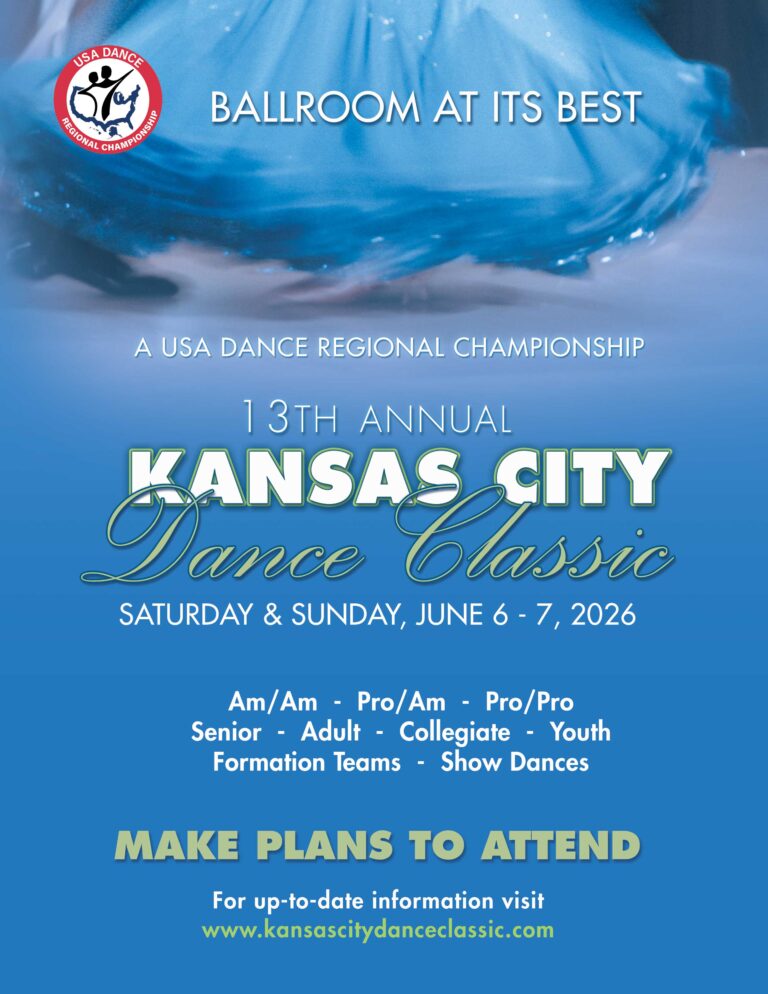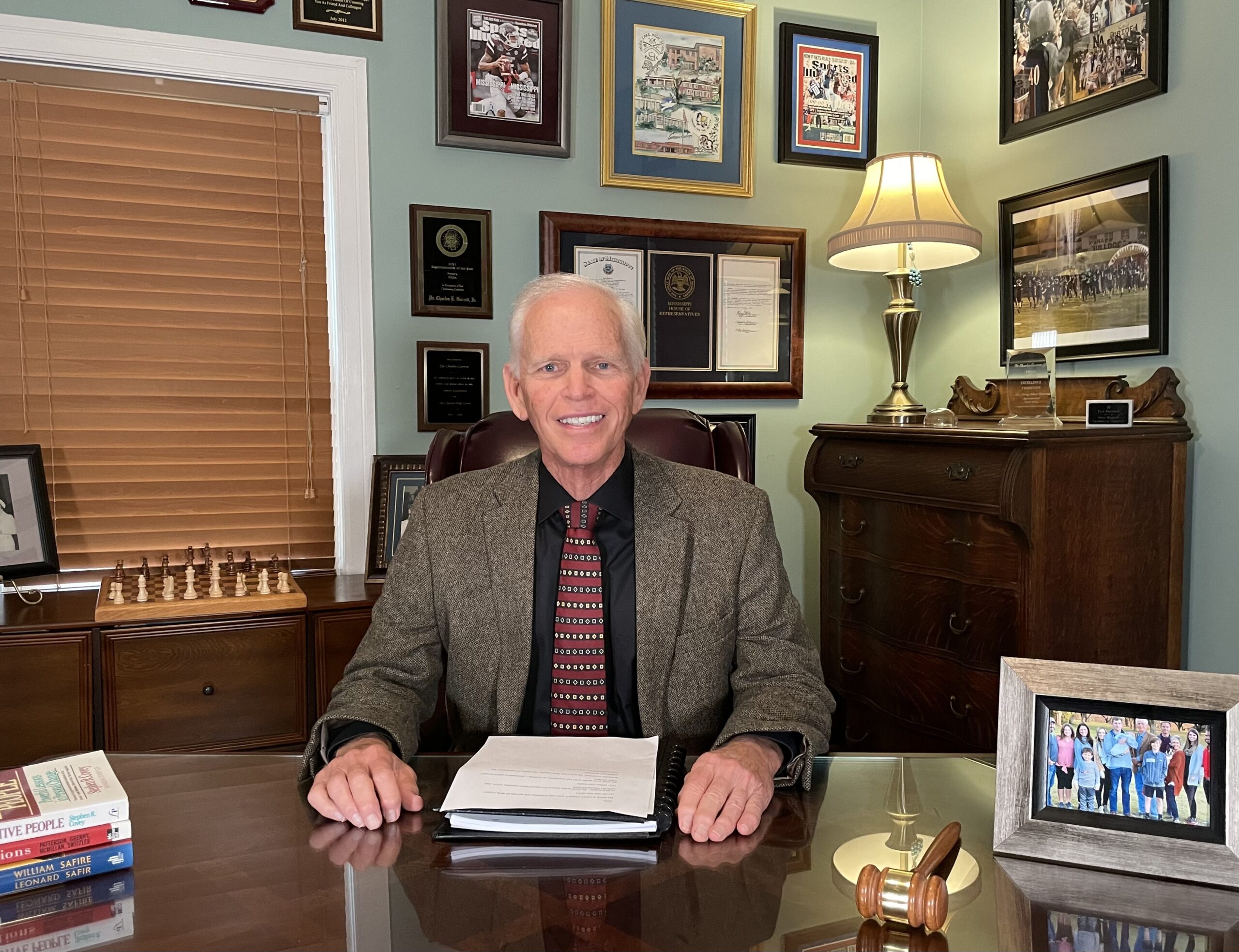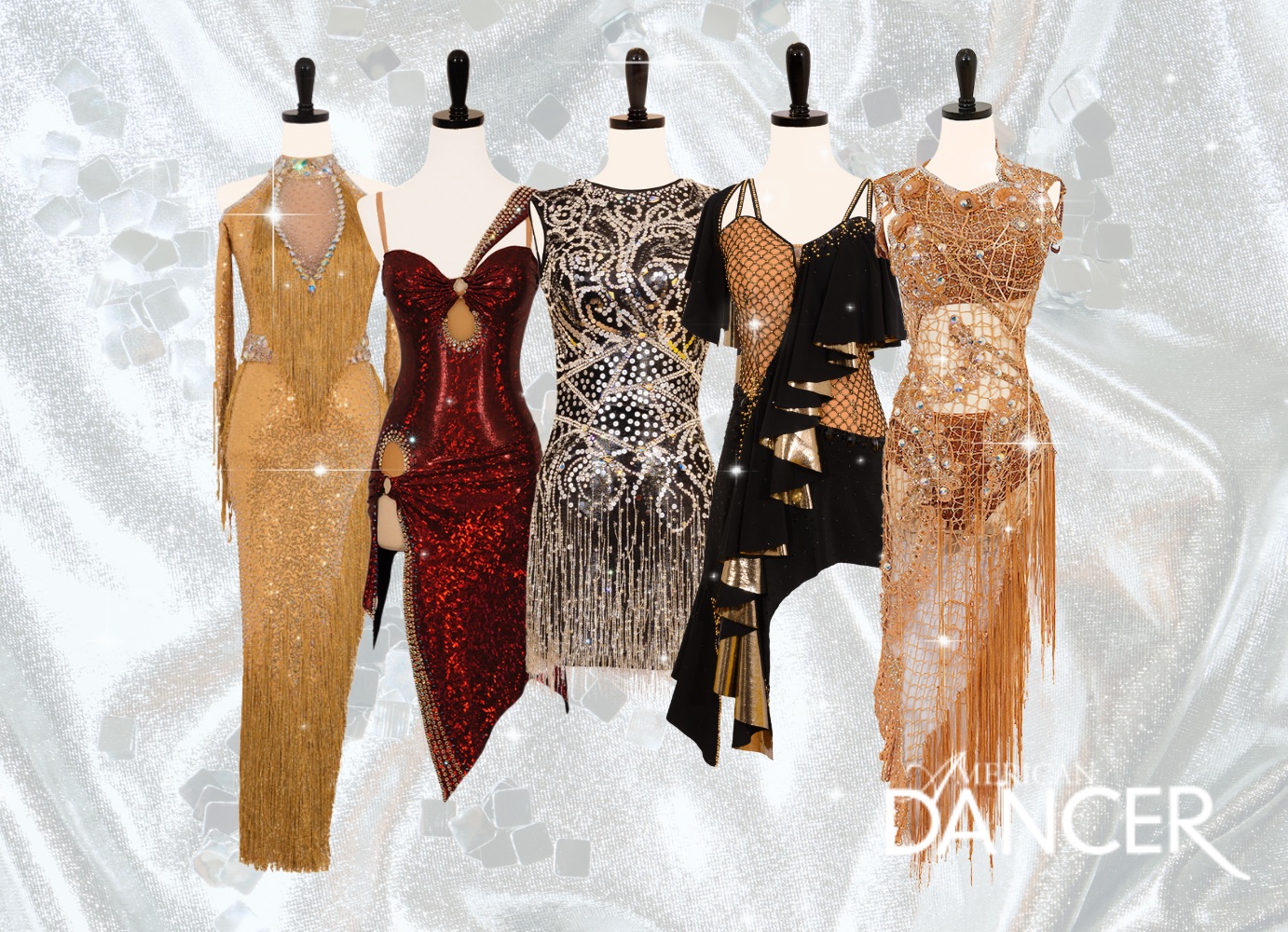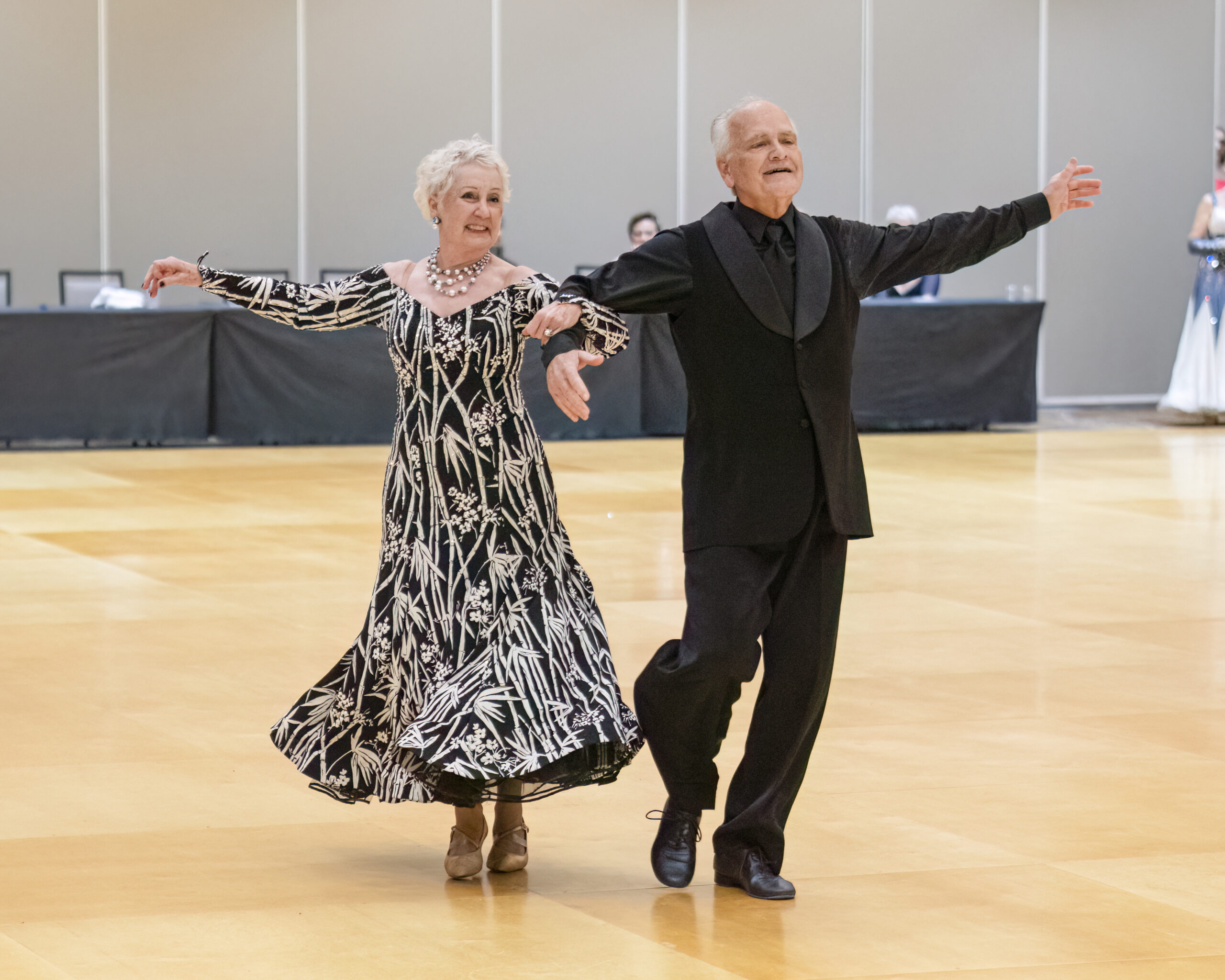The following information is geared more toward dancers who are not new to the sport. In the early stages of dancing, we are more concerned with timing, footwork, leg actions, holds, amounts of turn and a few other fundamentals. This article covers the subject matter from the perspective of more advanced dancers who are moving into the nuanced phase of competitive or show dancing. While this lesson will be of value to all dancers at some point, newer dancers will want to get in-depth guidance from their teachers/coaches to help them better understand the principles discussed in this article.
The same words can mean very different things to different people. Many people think of turn and rotation as being the same thing. While that could be true from one perspective, in dancing we are referring to different technical aspects when using those words.
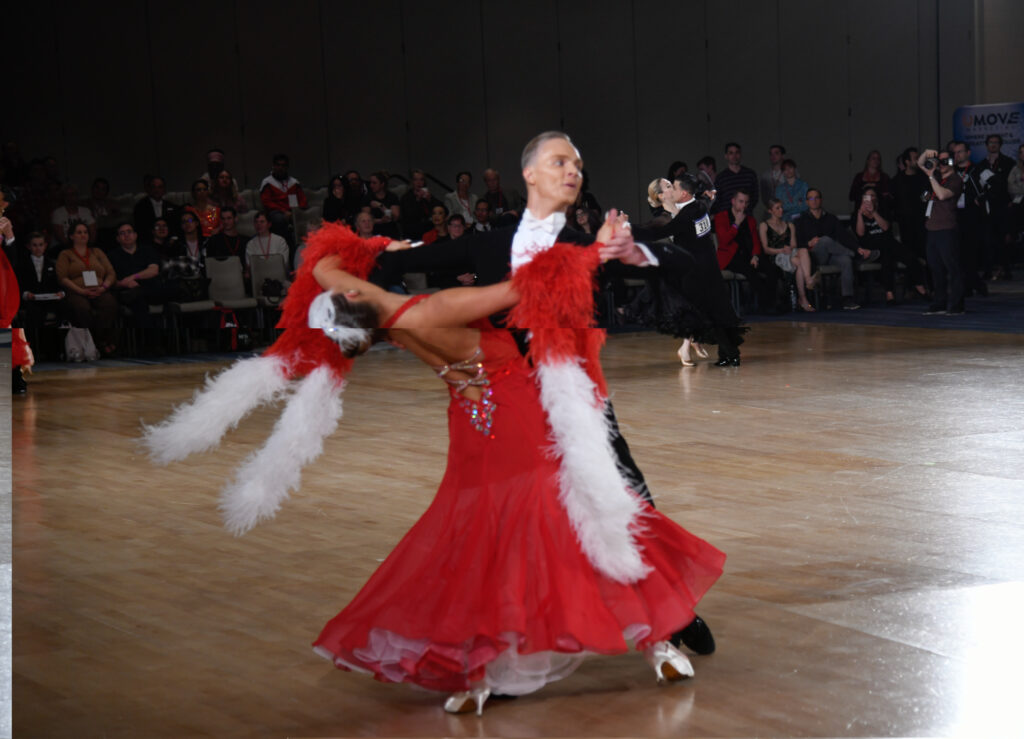
Rotation is a form of turning, but in dancing it really refers to actions of the body independent of actual turn. For example, in a Foxtrot Feather Step, rotation is used to facilitate the action of the leader in stepping outside partner. The rotation of the bodies helps maintain the connection of the partners’ centers. There is no actual turn on the Feather Step, but there is body rotation.
Turn is used when a measurable amount of turn is made on one step, between two steps, or over a certain number of steps. In a Foxtrot Natural Turn, up to ½ turn to right is made over steps 1-3, and up to a further ⅜ turn to the right is made on step 4.
In each example, the hips have initiated the action. In the first example, the hips, shoulders, and centers turned to the right, but the feet continued in a direct line from first to last step. In the second example, the entirety of the feet and bodies turned over several steps with the partners facing new directions on each of the first four steps of the figure.
Rotation is sometimes referred to as “shaping” and is used to aesthetically enhance the movements as they are danced. At times, more rotation is seen in the shoulders and upper body than in the hips, but the hips will nonetheless have initiated that rotation. And, in most cases, there is a certain amount of turn combined with rotation, such as in a Curved Feather where rotation is used in the same manner as in the non-curving Feather, but turn is added to create the curve. The more versatile a partnership is with rotation, the greater will be the visual appeal of their performance to any audience, but especially to judges.
As stated, both rotation and turn are initiated by the hips. Both could be considered turn, and both could be considered rotation. To separate the two in your mind, do the following: Think of turn as being initiated on the approach to, in our example, step 1 of the Natural Turn. This notifies your partner that you actually want to turn both the feet and the body to new directions during the action being danced. Think of rotation as being initiated after having arrived on step 1 of, in our example, the Feather Step.
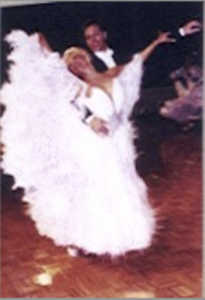
In dancing, nothing ever happens in a vacuum. There is always some overlap of rotation and turn as we navigate from one weight change to the next. While you can practice these techniques in isolation and gain a better understanding of them as individual aspects of what occurs during a dance movement, putting them together in the right mix as you dance will be the real challenge.
Generally speaking, a Feather Step followed by a Three Step will give you two opportunities to practice rotation without turn. Follow this with the Natural Turn and you will then be able to practice turn and feel how it differs from just rotation. Once you feel comfortable with these two techniques, move on to more difficult figure groupings that will challenge you to use rotation and turn in combination, such as in the Curved Feather.
Keep in mind that rotation can actually be opposite to the direction of your turn. In a Basic Weave, the overall turn is to the left, but the rotation is to the right. In a Natural Weave, the turn starts to the right but eventually changes to turning to left. After step 2 of the Natural Weave, the rotation continues to the right until the end of the step. Becoming adept at managing these differences between rotation and turn requires much practice. But gaining mastery over them is well worth the effort. With continued practice and proper guidance from a qualified teacher/coach, you will soon enjoy a whole new dimension in your dancing.

Phillip Stephens has achieved much success in the ballroom world and possesses many areas of expertise. He is highly qualified in numerous aspects of both business and dance.
Examiner: After successfully undergoing the Imperial Society of Teachers of Dancing (ISTD) Examiner’s Assessment at the organization’s World Headquarters in London in October of 2000, Phillip became the second native-born American to ever hold a post as a US ISTD Examiner.
Dance Organizations: A former Treasurer and Past President of the USISTD, Phillip has also served on that Society’s Board of Trustees. He is an active USA Dance member, having served as President of the Federation’s Houston Chapter and on several committees for the National organization. Phillip is currently serving as Chair of the USA Dance Organizer’s Committee, Chair of the USA Dance Invigilation Sub-committee, and is Secretary for the USA Dance Ballroom DanceSport Committee (BAC). He is an examiner for and member of the Federation’s examination department. Through the US ISTD, Phillip holds a Licentiate Degree in Theatre Arts and Fellowship Degrees in American Ballroom/Smooth and American Rhythm; through the ISTD, he holds a Licentiate Degree in Viennese Waltz and Fellowship Degrees in the International Ballroom/Standard and International Latin American styles of dance.
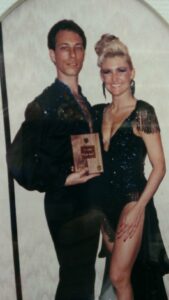
Competitive Career: Phillip has competed successfully in many events throughout the USA. He and partner Lisa Sandifer were American Rhythm Vice Champions at Heritage Classic and at the St Louis Star Ball, were Rhythm Finalists at Ohio Star Ball, placed 4th in Open Pro Smooth (EUS) and were the 1989 Eastern United States Rising Star Smooth Champions.
Stage Performer: Phillip has performed on stage in such works as, among others, “200 Years of Dancing in America” and as the principal in “The King and I”.
Contributing Author: Phillip has been a featured contributor for dance articles in the Houston Chronicle, has published articles about dance in various magazines and has edited and written books on dance technique. His critiques of “Dancing With The Stars” were frequently linked to the ABC blogs about that show.
World Congress Lecturer: With Lorna Stylianos as his demonstration partner, Phillip presented a lecture on American style Rhythm dancing at the ISTD Worthing Congress in July of 2007.

Championship Level Adjudicator: Phillip holds Championship level judging credentials and is licensed by IDO, USA Dance, and WDSF. He has judged various events including USA Dance Regional and National Championships, Ohio Star Ball, and the US DanceSport Championships. He has also performed the role of Invigilator at several competitions, including the USA Dance National Championships and the United States DanceSport Championships.
Studio Owner: For 29 years, Phillip owned and operated The Dance Place, one of the largest, most beautiful, and highly popular ballroom dance schools in the city of Houston, Texas. With 50+ teachers in the studio on a weekly basis and with a variety of popular coaches visiting regularly, The Dance Place was a very active facility. The studio presented two 1-day competitions each year and its annual Holiday Show held every December was a Houston “must attend” event that drew capacity crowds.


